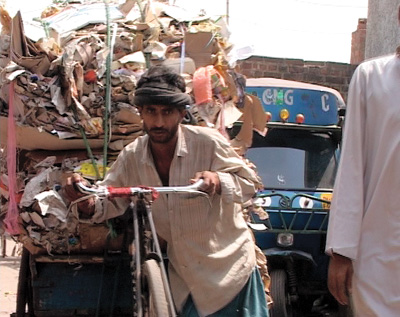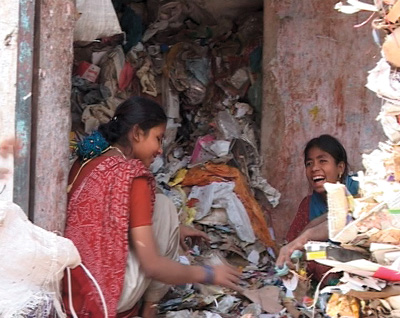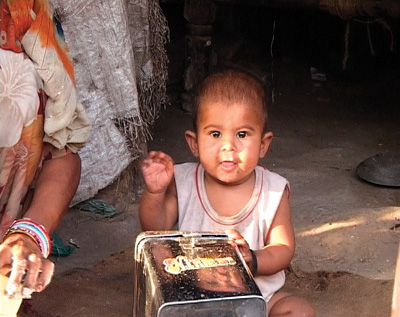There are various reasons why slums in Delhi abound, but the main reason, without a shadow of doubt, is the denial of housing rights of the Economically Weaker Section (ews) and the Lower Income Group (lig), as set aside by the Master Plan of Delhi (mpd). The non-implementation of the MPD-2001, which has clearly set aside 2000 hectares of land for the poor, is the sole reason why the poor are forced to live in slums and resettlement colonies. If the Judiciary made certain that the implementing agencies followed the MPD-2001, and that the 2000 hectares of land kept aside to address the housing issue of the poor were used and directed to the poor, then the problem of slums in Delhi would have been taken care of. Yes, make sure that clusters don't become slums but also make certain that the poor get what is their rightful due. Slums are a result of the implementation backlog of Master Plans. Don't let anybody tell you otherwise. Yes, lack of rural development forces people to migrate to the cities but poor urban town planning, non-implementation of the Master Plans and politicians who want a vote bank are the main culprits who exploit the poor and even force them to live in slums, when they could be living in more stable and permanent housing conditions. It is important to understand the need for the Delhi Master Plan (dmp), to be followed and implemented, if we want our fellow citizens not to live in abysmal conditions and be shunted around like animals. Even at the risk of sounding like a stuck gramophone, I once again repeat, that the insane growth of slums in Delhi are mainly the result of the non-implementation of the Master Plan.

The dmp has a certain vision and has allocated land, and along with the land, has specified certain mandatory services that are a must and a prerequisite to housing for the Economically Weaker Section (ews) and the Lower Income Group (lig). Most importantly, the Master Plan, apart from allotment of land for the ews and lig, also lays great importance on the overall well-being, of those, being allotted plots of land. Sanitation, education, health, basic civic amenities, appropriate space and infrastructure, proximity to work, and if not enhancement, then at least, no danger of loss of livelihood, are issues that are stressed upon. These are fundamental issues, provision of which is mandatory and a must, for the overall well-being, of the family. The dmp also has specified '25 sq m minimum plot and 300 units/ha maximum net density'. (It was in Jagmohan's tenure, that plot sizes were downsized from the statutory minimum of 25 sq m to 12.5 sq m.)
All these stipulated provisions, if followed and implemented, would have automatically enabled the poor to reside and live with dignity. If the Master Plan was adhered to and implemented, we wouldn't have forced millions of our poor people, to live in slums and other abysmal housing conditions and also, the growth of slums would have been considerably slower. Remember, nobody wants to live in a slum or even these pathetic resettlement colonies, that are many times worse than slums. According to town planners and sociologists, these resettlement colonies are nothing but 'legalized slums'.
Take for instance these statistics. For the period 1981 to 2001, the Delhi Master Plan had stipulated a housing target of 16.5 lakh units of which 25 percent (4 lakh plots) were for ews; 3 percent (49,000) were for resettlement units; 43 percent built housing (lig was included) and then 4 percent was for employees' housing and 25 percent was for individual plots. Till the end of 2003, barely 36,000 resettlement plots had been handed over. If the 4 lakh plots for the ews had been provided and the Delhi Development Authority (dda) along with other Government agencies had gone about their jobs responsibly, the slum scenario in Delhi would have been very different. Keeping all this in mind, the Delhi Master Plan, takes on a pivotal role in solving the issue of housing and slums in our city.

Also the dda was allotted thousands of hectares of land for residential purposes, including low-income housing, but it has used only 20 percent of this area. As every town planner and sociologist has time and again said, that the growth of slums as well as the very issue of slums, is the result of non-implementation of the Delhi Master Plan than why should the poor suffer and their homes be demolished due to an implementation backlog, that is no fault of theirs. Though thousands of hectares of land was allotted for ews and lig housing, and, though the Master Plan did anticipate that virtually 4,25,000 poor families would be in need of housing (that too by 2001); the implementing agencies have been sitting on their haunches, twiddling their toes and worse, instead of building homes for the poor, they have gone about like morons in heat, demolishing homes of the poor.
The Delhi Master Plan also has a mention for affordable integrated housing. Thus, for one lakh people with "25 percent as site and services development and about 45 percent housing up to two rooms dwellings to provide shelter for low income families".
These Resettlement schemes, are first of all unnecessary if the Master Plan is followed and implemented. Also, these so called resettlement areas are on the outskirts of the city, where there is no scope of earning one's livelihood, standards of sanitation, hygiene and medical assistance are virtually non-existent and also the lease is not permanent. This only means, as and when, the authorities, politicians or the land mafia, want to, they can once again demolish the homes of the poor. Thus resettlement colonies like the one in Bawana, is nothing but a slum that at the moment is not occupying prime land.

In fact, those living in Yamuna Pushta slums were far better of than those living in Bawana. The reasons are obvious. The plots alloted are smaller than the minimum size norms set aside in the mpd; over crowding is virtually the norm; livelihood is non-existent as Bawana and most of the resettlement colonies are on the outskirts of the city, way away from the thick of things and employment opportunities and transportation facilities are not only pathetic but exorbitant. Amenities like medical support system, proper education facilities, a practical and an operational transport system and proper sewage system are not even heard about. Thus, slums in prime locations are demolished and slums under the guise of resettlement colonies are set up on the outskirts of the city. Those in power do not want to see these poor people and that's that. The day even this land is needed, resettlement colonies like Bawana too will be razed to the ground.
Ironically, the Division Bench that vacated the stay on demolition by a Single-Judge Bench of the High Court on February 5th, 2004, directed the authorities to implement the rehabilitation and relocation of the slum dwellers simultaneously. The High Court directed that proper basic amenities including power, water, sewerage system, schools, dispensary and transportation, be provided in the rehabilitation colonies. No body bothered to verify the implementation of the Court's order. Apart from this Judgment and despite Housing being a Fundamental Right guaranteed under Article 21 of the Indian Constitution - the Right to Life (in Chameli Singh's case and Shantistar Builder's case, the Supreme Court held the Right to Housing to be part of the Fundamental Rights, saying that the Right to Shelter includes adequate living spaces, safe and decent structures and clean surroundings), all this seems to be applicable only on paper.
Obviously, these chaps in the High Court and the Supreme Court haven't stepped into Bawana and Holambi Kalan and all the so-called resettlement colonies, to see the pathetic conditions prevalent in these ghettos and they haven't bothered to ascertain whether the poor families who have been dumped on these barren pieces of land, have been provided with any sort of civic amenities. How could the Courts pass the order without ascertaining the ramifications of their Judgment is beyond me and if this is the state of the Judiciary and their abysmal lack of responsibility towards the citizens of our country, God help us all.